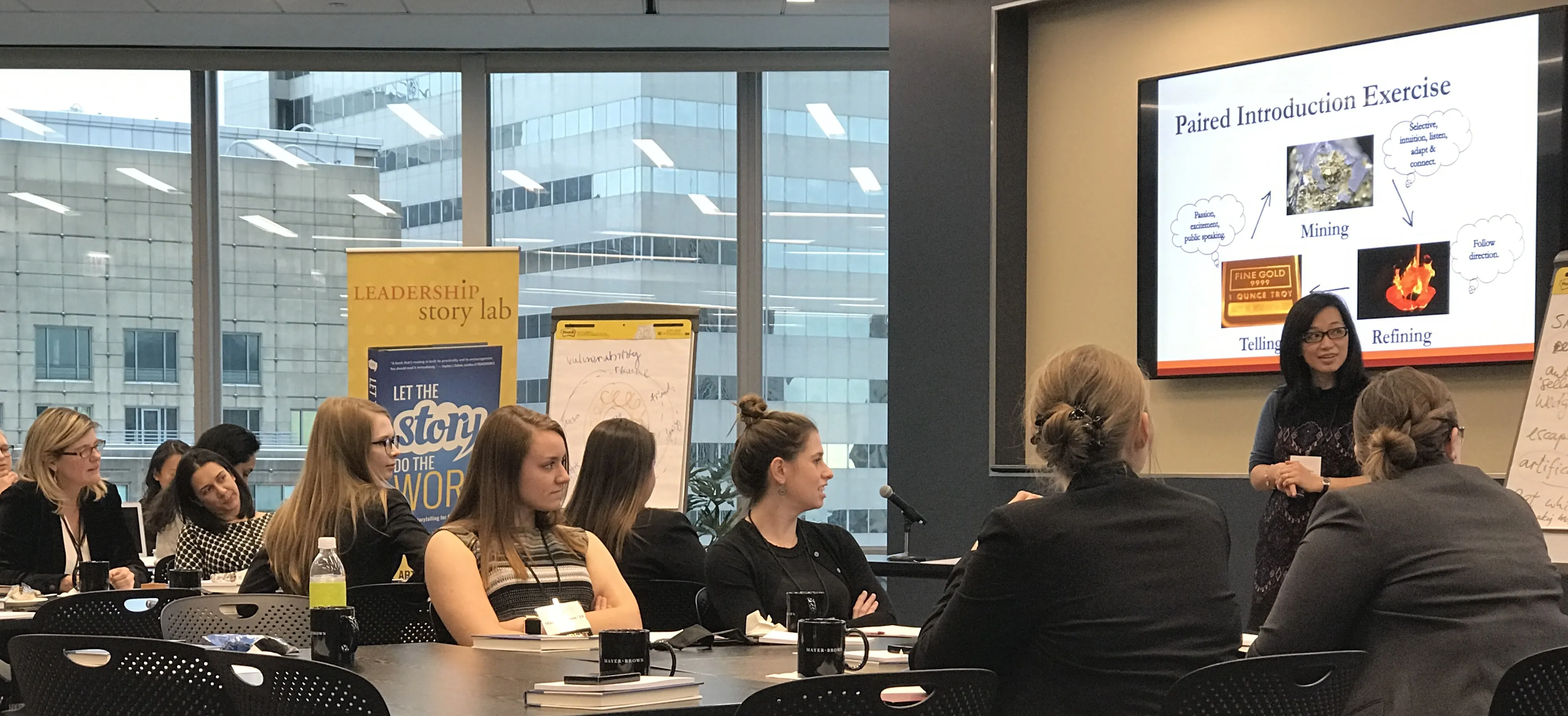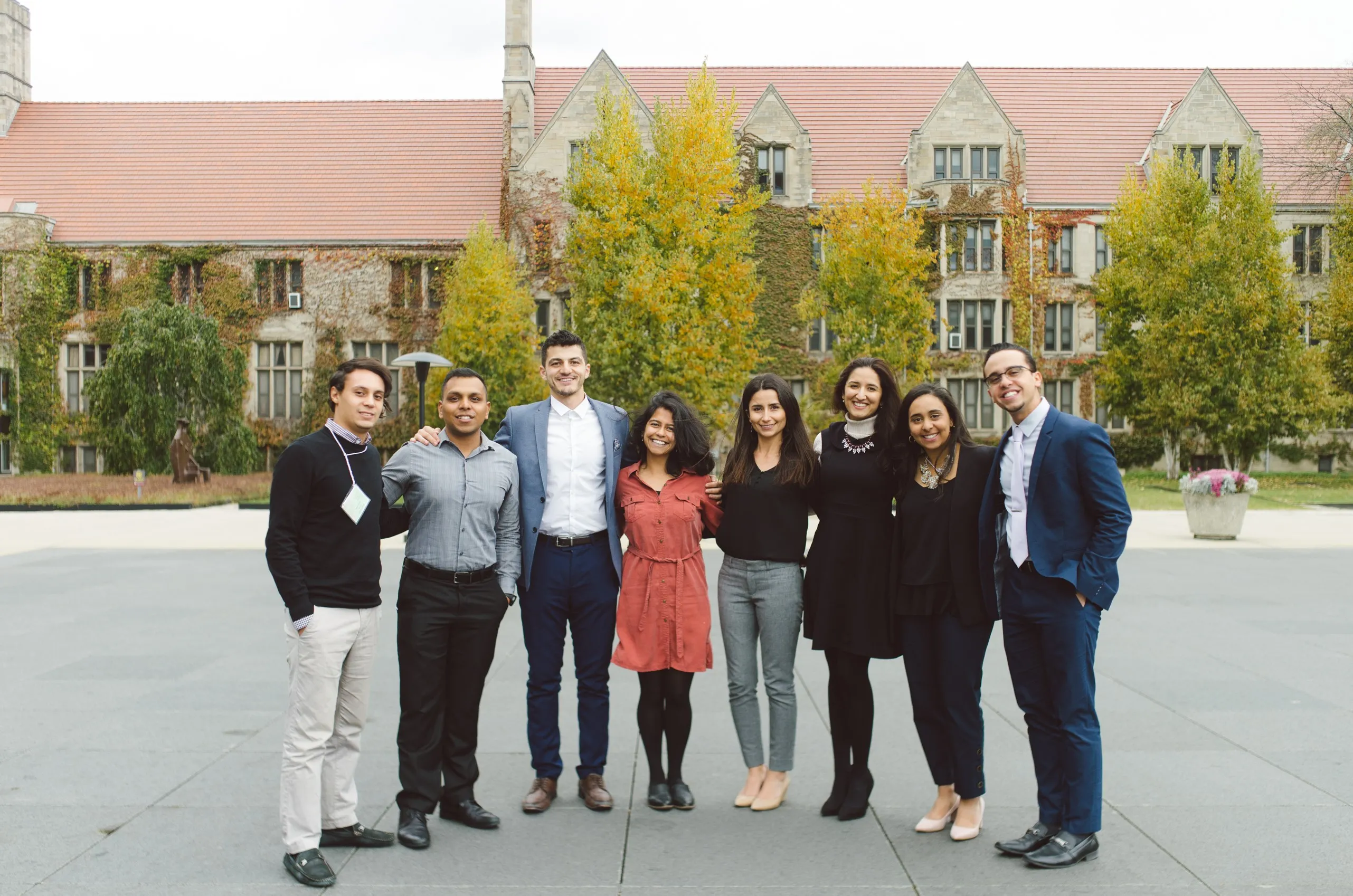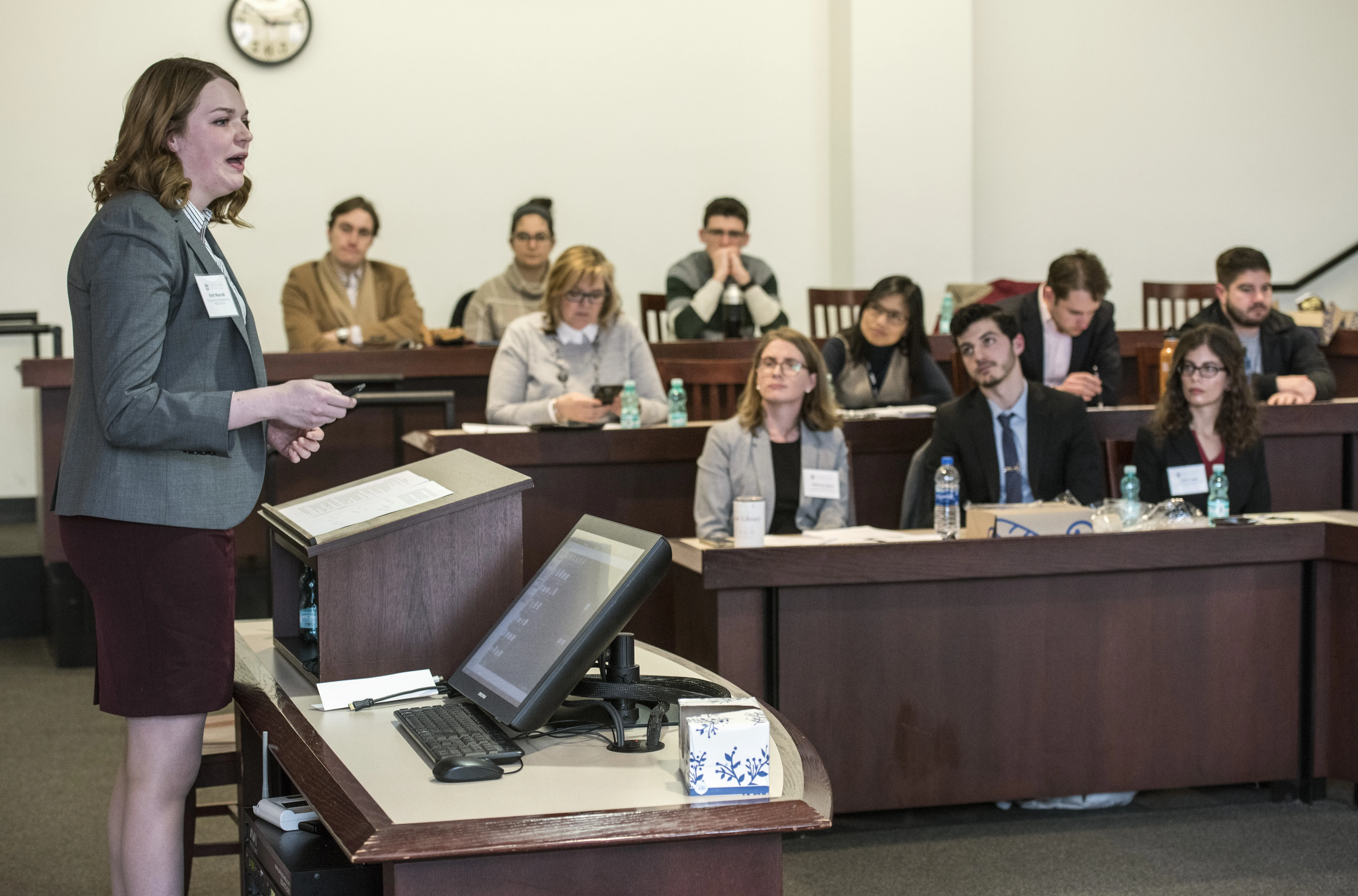Creating Connections

Job candidates and prospective law students have chased it for years: the elusive “something more” that sets them apart from other high achievers in an interview—the fit, the click, the little nugget that gets them the spot.
The key to finding and displaying it, however, is relatively simple, though it takes some practice, former Booth School of Business admissions officer Esther Choy told several dozen University of Chicago Law School students recently.
Tell your stories, she said, and tell them well.
“The most critical element [of business communication] is that you have to get your audience to care,” said Choy, who is the founder, president and chief story facilitator at Leadership Story Lab, a consulting and training business that helps people and organizations to use storytelling to make business connections. “If they care, then they are motivated to hear and listen to whatever information you have to share with them.”
Choy—who spent years rejecting otherwise promising Booth applicants because they hadn’t told their stories well enough to demonstrate “fit” —was one of two keynote speakers at the Law School’s Orloff Women’s Leadership in Law Forum last month, a day-long event aimed at helping women Law School students develop key leadership communication skills. The event was sponsored by Ann Ziegler, ’83, through the Mark A. Orloff Fund, organized by the Doctoroff Business Leadership Program and the Law Women’s Caucus, and hosted by Lori E. Lightfoot, ’89, and Mayer Brown LLP.
At the start, Lightfoot noted that programs like this are important because they allow women “to see other people like [them] who are in the same endeavor,” to learn from each other, and “to hear each other’s stories.” In telling those stories, each of the day’s speakers described what Tasneem Goodman, ’02, managing managing director at GrowthPlay, called “an incremental path toward being more me.”
This focus reflected what Law Women’s Caucus Vice President Kelly Yin, ’19, described as the goal of this year’s forum: to foster “community among alumnae and students” while giving attendees practical insights about the role of personal narrative and brand in charting a flexible career in the legal profession and beyond.
Goodman started her career as an associate at a large law firm, but she pivoted from legal practice to marketing, serving as director of marketing at Katten Muchin Rosenman before ultimately joining GrowthPlay, a sales effectiveness consulting firm. In describing her career transition, Goodman noted that her first marketing job was one for which she was not necessarily qualified on paper. This mismatch required her to leverage her personal brand to communicate both the value and transferability of her skills.
Other speakers also described career turns that underscored the value of developing an authentic, aligned personal narrative.
Sharon Fairley, ’06, gave up a successful career in advertising to attend the Law School and pursue public service. Recently, she left her role leading Chicago’s Civilian Office of Police Accountability to run for Illinois Attorney General. Her experience leading a challenging police reform initiative gives her a unique “hook” to connect with the Illinoisans whose rights she wishes to defend, she said—which is why telling her career story is an important part of connecting with voters.
Laura Grisolano, ’98, left a large law firm and fulfilled her long-held dream of running her own mediation practice. In addition to mediation services, Grisolano has grown her business to offer leadership development programs and conflict management solutions. This expansion allowed her to use her established brand to reach new customers and to spark new engagements with her existing customer base, all while keeping her activities aligned under her consistent mission to help people and organizations move forward.
In addition to an authentic personal brand, finding the courage to pursue new professional opportunities requires identifying and addressing the “limiting beliefs” in “the stories we tell ourselves,” explained Robin Ross, executive director of the Doctoroff Business Leadership Program. For this reason, she encouraged participants to adopt an “anthropologist’s mindset,” to observe their internal narratives throughout the day, and to ask themselves whether their stories hold them back or move them forward.
To help participants explore this, Choy led them through an interviewing exercise in which they asked each other questions designed to evoke the stories behind their resumes using questions such as “What’s something you thought you knew, but later found out you were wrong about?” and “What’s the best investment you’ve made and why?”
The goal, Choy explained, was to “mine” their experiences and beliefs for narrative material that would hook listeners and inspire them to care. After the interviews, participants combined their mined material with Choy’s storytelling framework to introduce their partners to others at their table in memorable, resonant ways. Beyond offering an opportunity to meaningfully connect with someone new, the exercise allowed each participant to see herself and her story through the eyes of her partner and identify the most powerful aspects of her narrative.
Echoing the importance of self-evaluation and introspection, Goodman noted that character is a critical—and often underappreciated—aspect of one’s personal brand. Character “is less about what we deliver but how we deliver it” and reflects qualities such as “consistency, service, and reliability” in “the way in which we interact with our clients and colleagues,” she said.
But one’s character, however obvious it may seem to others, is difficult to describe in concrete terms. To underscore this, Goodman led students in evaluating whether their telling of past achievements and experiences evoked the character-related messages they hoped to convey. For example, she explained how to use inclusive language to express enthusiasm about previous accomplishments while also conveying appreciation for the colleagues who contributed to them. Doing so highlights competence and also communicates character traits like being team-oriented and agreeable, she said.
Goodman also shared strategies for turning fleeting networking connections into lasting relationships. One specific tactic, “the three ins,” involves staying connected with professional contacts by inviting them to events, introducing them to other contacts they might like to meet, and reaching out to them to request or share information.
Finally, Goodman emphasized the importance of always following the “platinum rule” in professional relationships: “Do unto others as they would be done unto.” This requires getting to know their preferences and, more importantly, asking, “How can you be helpful to someone? How can you invest in her so that she wants to invest back in you?”
While that question may seem intimidating to law students at the beginning of their careers, Ross offered some reassurance: “Mentorship is two-way street.”
She described how her mentees have used “the three in’s” to her benefit, concluding, “Mentees have a lot to offer, and those of us who are mentors really appreciate them.”
Goodman agreed, saying, “Sharing what they know and what they’ve learned is something most people really like to do. When you ask for our advice, it lets us feel like our gray hairs are kind of worth it!”


